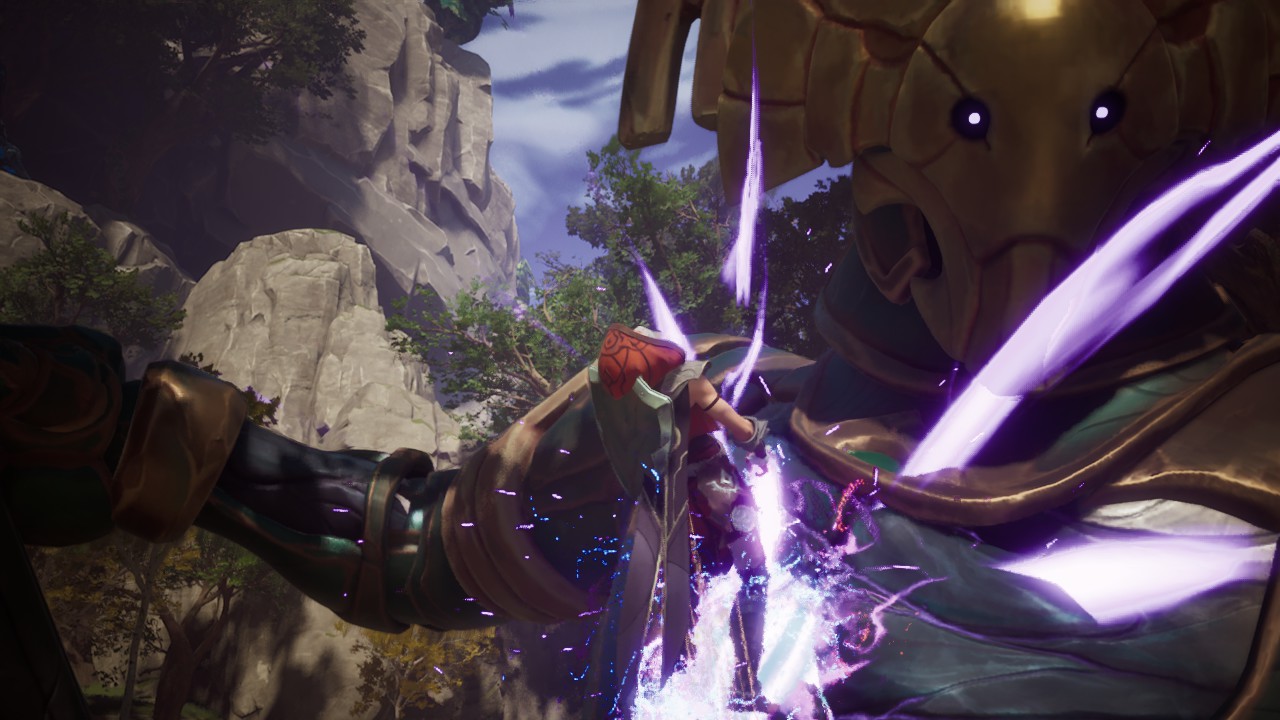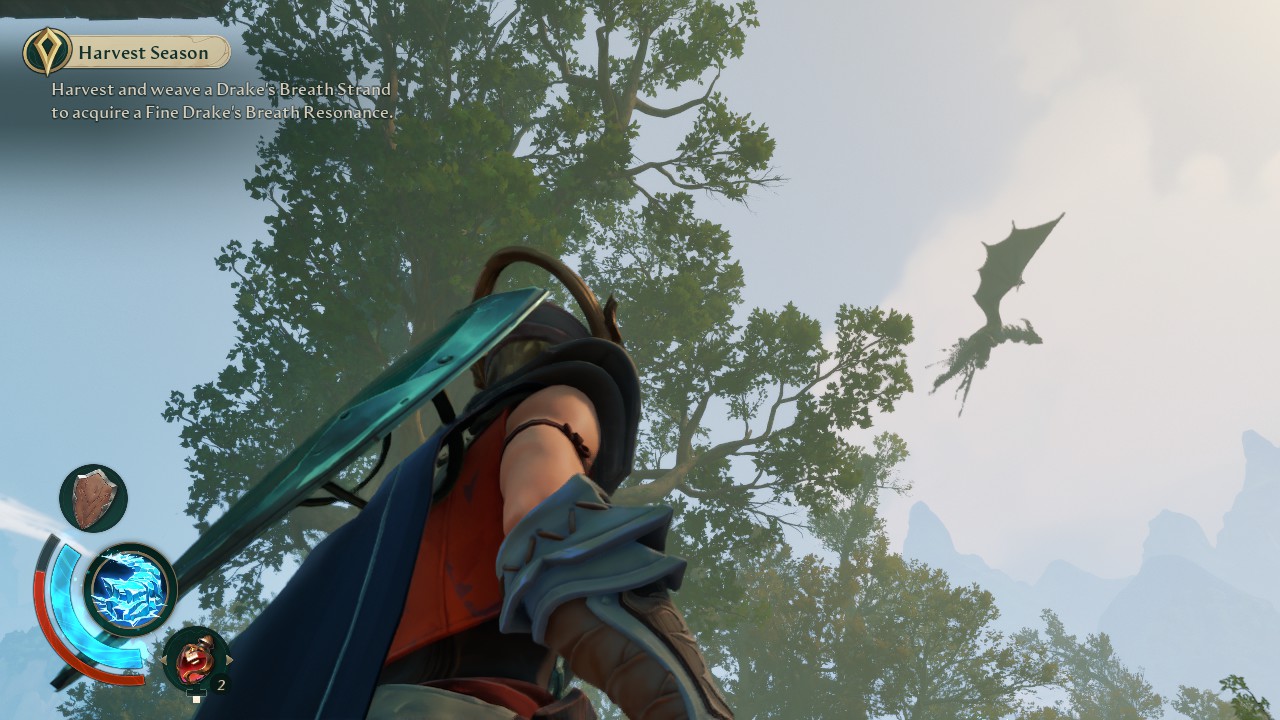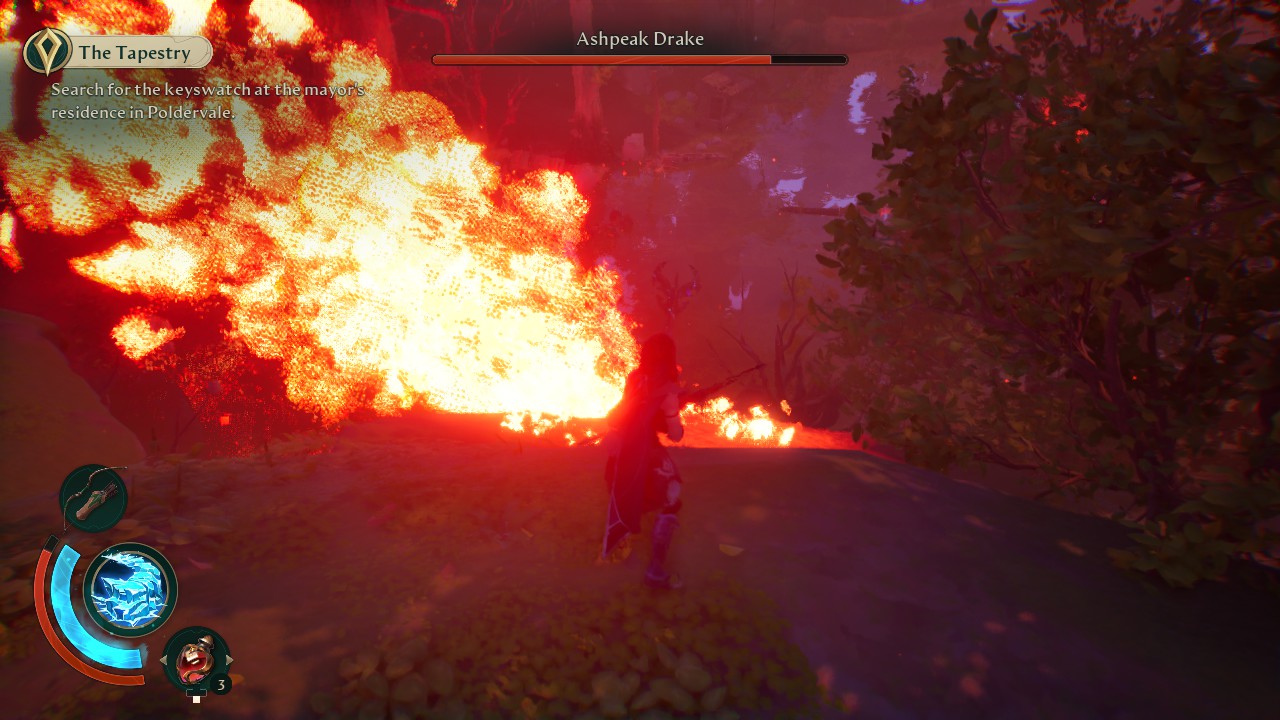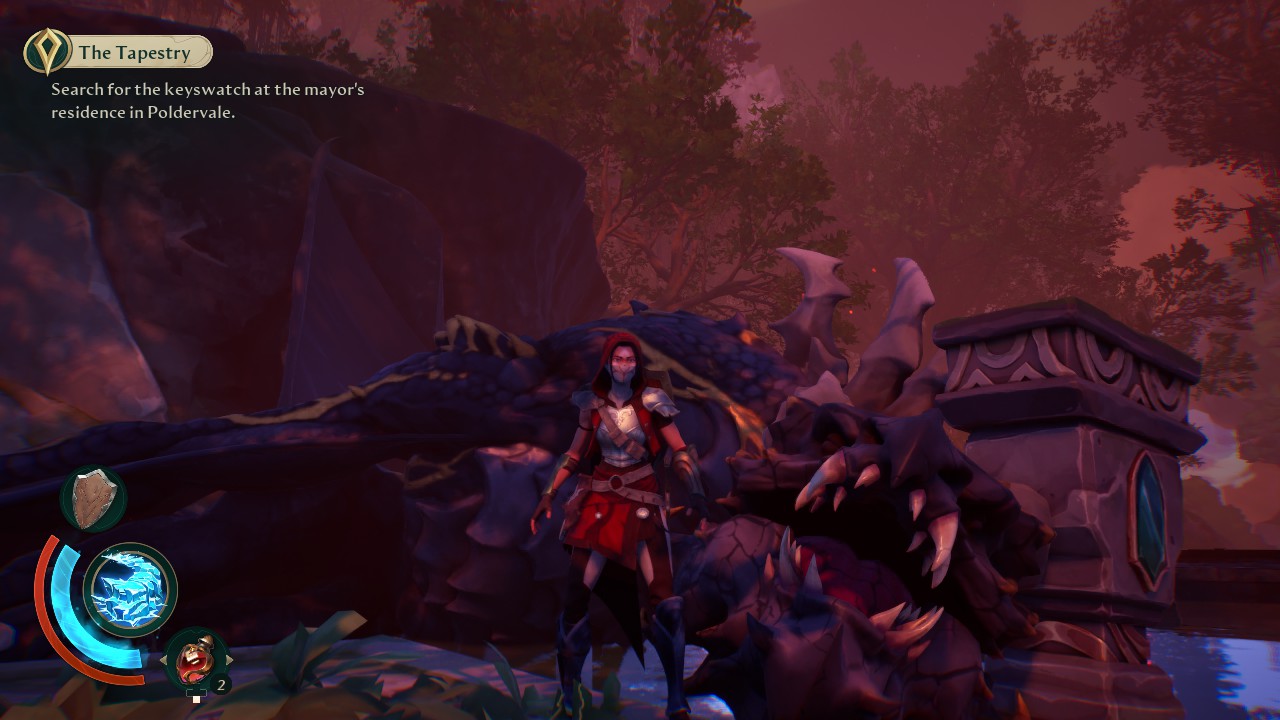Hot on the heels of an unsuccessful 25-hour attempt to enjoy Dragon Age: The Veilguard, my first couple hours with Eternal Strands, the new action-adventure game from a studio co-founded by noted Aftermath reader and Dragon Age creative director Mike Laidlaw, did not inspire confidence. In both games, I encountered dialogue that was a hair too quippy, a cast of characters that felt so kind and considerate as to be inoffensive, and ample talk of dragons and veils. But then I got kicked by a giant, and everything changed.
Eternal Strands starts out feeling like a modern-day BioWare game, but moment to moment, it’s really nothing like that at all. You play as Brynn, basically a wizard in a world where wizards are regarded with suspicion, and after you and your crew get stuck inside the walls of a magic mega-city that sealed itself off following a mysterious cataclysm, you realize the only way out is through. This means expeditions to various maps – a lush forest, a swamp, a gilded city that’s been partially reclaimed by nature – whose scale makes you seem like an ant in comparison.

There, you fight enemies and collect resources that, in a unique twist, alter the makeup and appearance of your weapons and armor on a per-item basis. Slot in some animal fur that raises cold resistance, for example, and your garment will also gain a blue hue. It’s neat! The changes aren’t just cosmetic, though. Depending on the in-game day and time, Eternal Strands’ maps can take on entirely new complexions, blazing hot one moment, freezing cold the next, or pocketed with concentrations of magic known as “tangles” that’ll swallow you whole if you’re not careful. Crafting sets of armor that meet the moment is key.
Even so, these hazards would be easily navigable if not for Eternal Strands’ centerpiece: In addition to regular-sized enemies who irritate more than they challenge, each map contains some manner of colossus who seeks, with determination that sometimes borders on comical, to absolutely wreck your shit. The first of these, basically just a really big guy, got my heartbeat up by forcing me to climb him and attack weak points while he shook and scratched like a fleabitten dog, but I never felt like I was in any real danger during our knock-(him)-down, drag-(me)-out fight.

It was only once I took on my second towering goliath that everything clicked. What made this one special is that, prior to our throwdown, I was just minding my own business, climbing a sky-scraping tower in the center of a swamp and picking it clean. Then I saw a particularly large silhouette out of the corner of my eye. Initially, I figured “Oh, that’s a Later Me problem,” but Later happened just a few seconds after that, when I realized that the floorboards of the level of the tower I’d climbed to were on fire. I frantically rounded a corner as a dragon narrowly missed me with a gout of angry flame. “What the fuck!” I yelled in my dark apartment, jolted out of a pre-bedtime haze. A lengthy health bar appeared at the top of my screen. “Ashpeak Drake,” it read.
While I managed to deal some meager damage with my bow and arrow, I ultimately decided to beat a hasty retreat to a portal back to camp; I’d collected quite a few resources and didn’t want to risk losing them by dying. After upgrading my gear a bit, I returned to the same map – which, keep in mind, was large, open, and multifaceted – with the intention of completing a portion of the main quest. I’d been tasked with investigating a conspicuously frozen village in the middle of the swamp, so I chugged a cold-protection potion and prepared to comply. But then, as I poked and prodded and, at one point, knocked down houses in search of information, I heard the flap of house-sized wings overhead. Fireballs soon followed. The first time, I chalked it up to coincidence. This time, it was personal.

What ensued was a 25-or-so-minute brawl that called to mind the best moments from Dragon’s Dogma 2. I got swatted around like a fly, such that there were natural points when we disengaged and I could scurry away and recover, or other enemies decided to attack me, the dragon, or both of us. I ended up kiting the dragon around the base of the tower from before, which went from looking like a relic from an older, better time to a smoking ruin. It felt vaguely poetic, given where all of this had begun.
Eventually, after I got tired of dodging fireballs, I charged straight at the dragon and climbed onto the back of its neck. As I hacked away at its armor-like scales in furious desperation, it stood up on its hind legs and began to immolate itself. Then it flew, with me on its back, to the frozen village, causing us both to take ice damage. We were both, it seemed, so sick of each other that we’d simultaneously decided mutually assured destruction was worth it.

I won the fight, emerging from the fray so exhilarated that I couldn’t sleep for hours. That’s pretty much the highest praise I can give a systems-driven game: Everything came together just right to create an unforgettable moment that will always be mine. This is not undercut by the fact that I later learned how to bring down the dragon with greater ease – or that, in one of the game’s cooler twists, I had to fight it again in a more specific, puzzle-like way to upgrade my magic powers. Those subsequent chapters only add to the larger narrative of that terrifying first time.
I guess the real Eternal Strands were the hulking, unforgettable enemies we made along the way.


